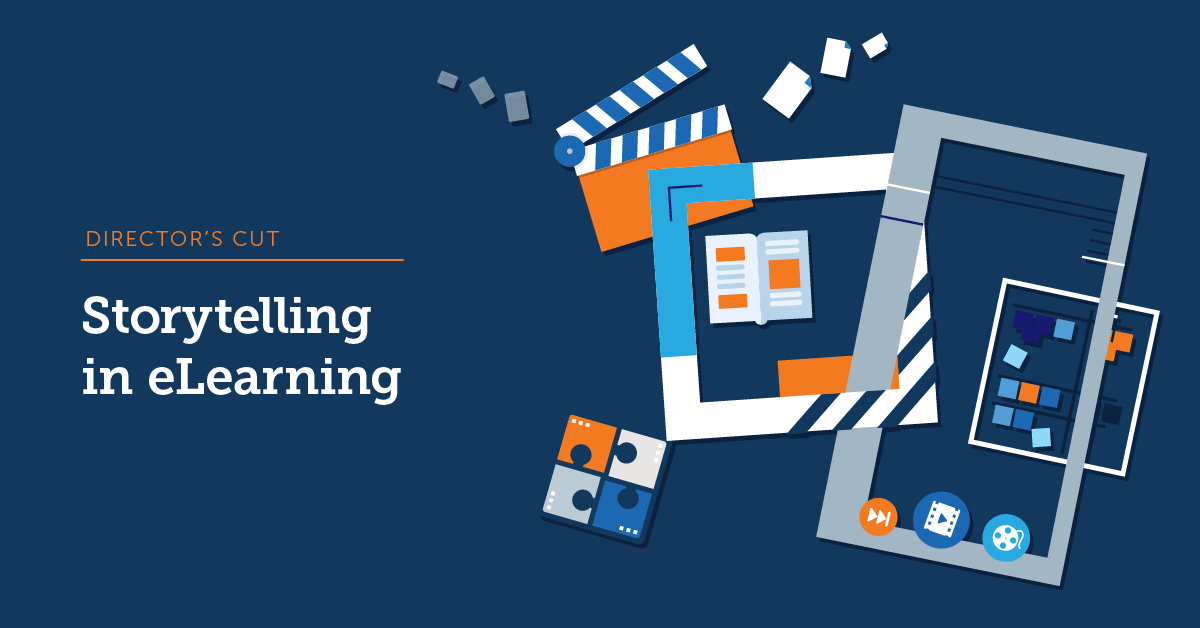If you’re thinking about creating an online course, then you’ve probably been wondering whether you can use artificial intelligence technology. The answer is yes! You can use AI to create your next course or program. However, there are some things that you need to consider before diving into the world of AI-powered education.
That first paragraph was generated by a popular AI writing tool.
Could you tell?
The bot-generated copy gets a lot of things right—it’s concise, professional but conversational, and even engaging. It was able to introduce the topic with just a simple prompt. But can you rely on AI tools to create online courses?
When it comes to creating useful, engaging, and effective training content, AI tools can give you a significant advantage over starting from scratch. But that doesn’t mean they can, or should, take on the whole task.
What is AI, and how does it write?
Artificial intelligence refers to technology that allows computers to make decisions about how they respond based on previous experience or information. AI is used in everything from voice recognition to self-driving cars to dating site algorithms. And now, with tools like ChatGPT, it’s gaining traction as a way to create original written content.
AI writing tools generate content using processes like machine learning (learning from data) and natural language processing (understanding language the way humans speak or write it and converting it into language a computer can understand).
They take a person’s input, whether in the form of questions, suggestions, or prompts, and gather data based on that input from across the web. They process all that data and use it to churn out or “predict,” original content.
How to use AI in writing
Tech has limitations. And that means you might not want to give it 100% responsibility to create an online course using AI (more on those limitations later). But there are a number of ways to use it to boost your writing efforts.
For example:
- Generating ideas on a topic
- Composing initial outlines to work from
- Doing preliminary research on facts and statistics related to your topic
Each of these benefits strengthens the writing process, and each can be applied to your online course creation.
Create online courses faster with TalentLMS
Gather online information, reuse existing material, and add your personal touch.
Easy to set up, easy to use, easy to customize.
4 ways to use AI when creating online courses
AI can streamline the process of creating new courses in a variety of ways. From helping you overcome writer’s block to speeding up production to refining your content, here are four ways AI can help you build your online training course.
1. Brainstorm content
AI writing assistants can help you break through writer’s block and ensure you consider all relevant content.
You know what kinds of training your organization needs—it may be courses required for compliance or to help you support specific company KPIs or initiatives. But you may still be left wondering where to start or what specific information to include.
As you input queries into an AI writing tool like ChatGPT, it will generate ideas by analyzing data on the topic and the intended audience.
For instance, say your company has moved to a remote, asynchronous work model. You want to train your employees on how to communicate effectively through email to avoid miscommunications and possible hiccups to your project timelines.
You put in a prompt to generate an outline on best practices for email communication. The tool will analyze existing content and come back with some of the top concerns and tips being discussed on the web.
You can then sift through these responses to pick out those that are most relevant in your case, and begin to formulate a lesson or a series of modules based on that.
TalentCards, the mobile training platform, has taken the course development process one step further. Instead of putting your prompts in an external tool like ChatGPT, you can use AI to create courses within TalentCards. You can simply add your topic or any existing content you have, and the platform will produce short pieces of text that capture your theme, generate relevant images, and tie them all together into a complete microlearning course.
2. Create useful course descriptions
Use AI to generate course descriptions that explain why the course matters and what learners will get out of it. A concise summary of your training helps employees understand its value and encourages them to engage with it.
And saves you time.
Whether it’s a summary within your LMS library to help individual employees follow a useful learning path or a document that garners support for your training strategy from company leaders, AI can help you create concise and compelling course descriptions quickly.
Many AI tools have templates for summaries or content descriptions. Simply input your full course content or outline and select any parameters (things like length or tone of voice). Then with the click of a button, you’ll generate a description of the main points of your content.
3. Producing visual elements
AI creation isn’t limited to writing. Use it to add engaging visuals and multimedia elements to your course.
Interactive training requires a variety of media types.
Graphics make it easy for the human brain to grasp and process information quickly. And many people learn better via video or audio instruction than just text alone.
The right AI programs can take your content and automatically generate attractive infographics to break up blocks of text and present important or complex content in a digestible way.
You can make your content even more dynamic with AI programs that can take your text and convert it quickly to professional-looking, engaging eLearning videos. These programs draw from existing usable images and clips, and you can also customize your videos with logos, your own images or clips, and design elements.
Build interactive training programs in minutes with TalentLMS
4. Refining your text
You can use artificial intelligence to help polish your final product. Grammar or spelling errors or convoluted writing can distract readers and decrease your credibility.
AI tools for editing and revision have become increasingly sophisticated, meaning they can scan your content to context and meaning and highlight or resolve even tricky human errors.
With everything from grammar checks to rewriting wordy or unclear sentences, AI tools can make sure your writing is concise, professional, and to the point.
You can use grammar and vocabulary AI tools to edit for correct word choice and clear, readable writing. Many writing assistants will also revise existing text to match a voice, suggesting changes to make your copy more professional or friendlier, depending on your preferences.
What AI can’t do
While AI has come a long way and can be a big help in creating your first drafts, don’t count on it to do all the work for you. There are a lot of nuances to a well-designed online course only human drivers can achieve.
For instance:
- Tailored content. Artificial intelligence can analyze standard information related to your content topic. But that doesn’t guarantee everything it finds will be relevant to your needs. You have to read and understand what’s relevant, accurate, and valuable.
- Creativity. AI can learn based on data it encounters and previous experience, but it doesn’t generate original thoughts or ideas. It can be a helpful way of organizing and analyzing data, but its thinking capabilities are very much still “inside the box.”
- Quality control. AI has amazing learning capabilities, but its understanding of language and logic does have limits. Without human control, you run the risk of poor quality affecting your content, from grammar and usage errors to misapplication of statistics to plagiarism.

AI plays an important role in the future of L&D
As we’ve learned throughout history, robots can’t replace humans. They can give your efforts a boost (see the opening paragraph of this article), but they can’t add that creative touch that will engage learners.
Does this mean that you can’t create an online course using AI? Let’s not disregard that idea just yet.
As the tech and tools used to develop training continue to advance, L&D can benefit by keeping up and incorporating what’s relevant.
Online course AI can’t roll out a completely effective, engaging course on its own. However, with planning and strategic use, it can help you meet your L&D targets more quickly and reliably.
| Tags: AI,eLearning Courses,Training Content



